Fig trees are low-maintenance slow-growing trees. Like other plants, these versatile trees need nourishment from fertilizers at some point.
However, overfertilization can also harm them. So, it takes a keen eye to know when to feed them and provide the best fig tree fertilizers in the market.
A balanced NPK fertilizer, like 8-8-8 or 10-10-10, provides enough nourishment for fig trees with stunted growth, shows signs of deficiencies, or planted in a location surrounded by other plants.
The three numbers or the NPK represent the lowest nitrogen, phosphorus, and potassium content of fertilizers.
Pro tip: Each fertilizer has a different set of NPK depending on the ‘secret’ formula of every brand. The NPK is not the actual number for every formula as every manufacturer wants to keep their formula to themselves to prevent the competitors from copying them.
Fig trees are classified as both ornamental plants and fruit-bearing trees. As an ornamental plant, most gardeners grow their fig trees indoors which requires less fertilizer and applied only if they need it.
Since over-fertilization can also harm your fig trees, it’s essential to know the problems that don’t really require fertilizer.
These include:
- Fig tree fruits that don’t seem to ripe as expected is a sign of overfertilizing them.
- Drought or lack of enough water supply makes fig trees bear immature fruits.
Also, fig trees love sun. So, if they’re showing some unhealthy signs, better reassess factors such as not enough water and sun before you head on to using fertilizers.
If nothing works and your plants still look unhealthy then it’s time to look for fertilizers to feed them.
In this post, we listed the 9 best fertilizers for fig trees in the market. We also provide the pros and cons to help you choose the best choice without going through the trial-and-error phase of using different brands of fertilizers.
(You could use the table of contents below to jump to the sections that are most important to you.)
9 Best Fig Tree Fertilizers – Reviews and Recommendations
Here are the top fertilizers for fig trees that will suit any type of gardeners:
1. Dr. Earth Organic Fruit Tree Fertilizer
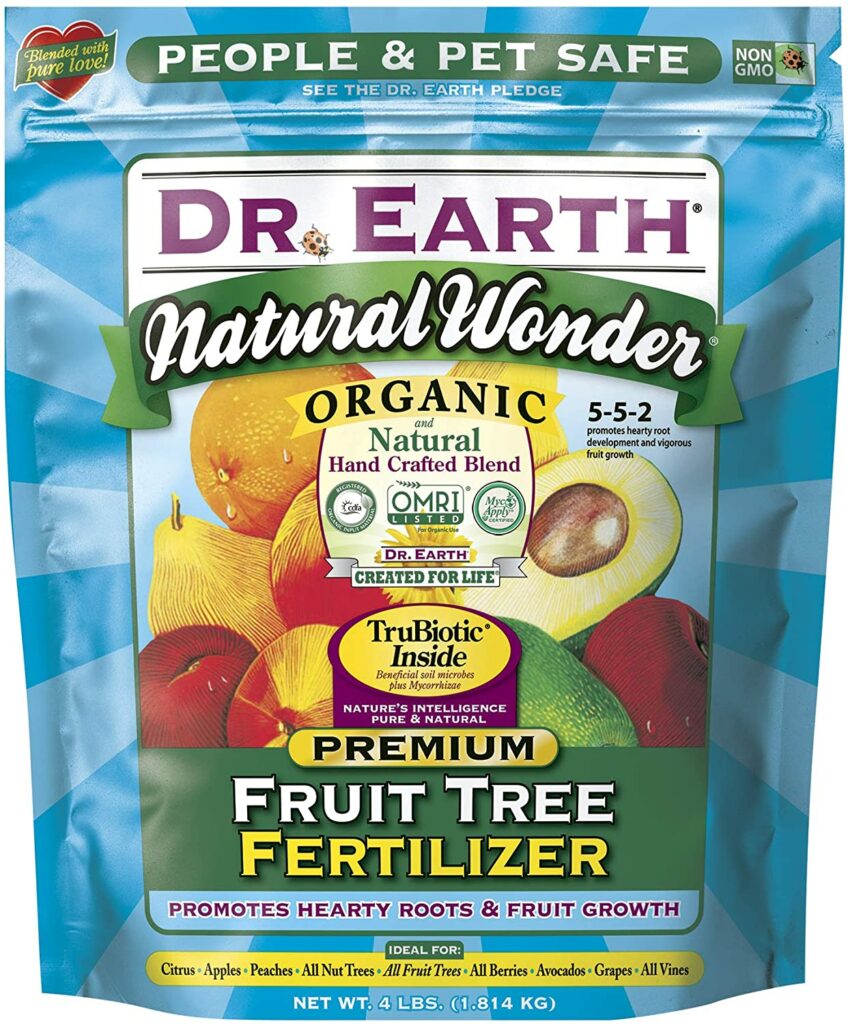
Top on our list is a well-loved organic fertilizer for a variety of plants, Dr. Earth Organic Fruit Tree Fertilizer is a 5-5-2 NPK fertilizer that can feed all types of fruit trees like fig trees, berries and fruiting vines.
It’s a slow-release granular formula that is made from handcrafted feed-grade materials. It contains:
- Feather meal
- Fishbone meal
- Cottonseed meal
- Kelp meal
- Seaweed extracts
- Probiotics
- Alfalfa meal
- Soft rock
- Phosphate
- Mined potassium sulfate
- Mycorrhizae
This fertilizer is organic and prides to have no synthetic content and GMO-infested chicken manure.
Along with its natural contents, it is also packed with Trubiotic soil microbes that help break down nutrients and release them in the soil for fast absorption of fruit plants and trees.
Its Trubiotic microbes also help boost the fig tree’s drought-tolerance, resistance to unwanted insects, and overall performance. It’s also OMRI listed which authenticates its place as an organic fertilizer.
Pros
- Organic fertilizer
- Environment-friendly
- Pet and kid-friendly
- OMRI-listed
- Slow-release formula prevents overfertilizing your fig trees
Cons
- Due to natural contents like fish bone meal, it has a bad smell.
- The smell may attract other animals like cats.
2. Earth Pods Ficus & Fiddle Fig Tree Fertilizer Spikes
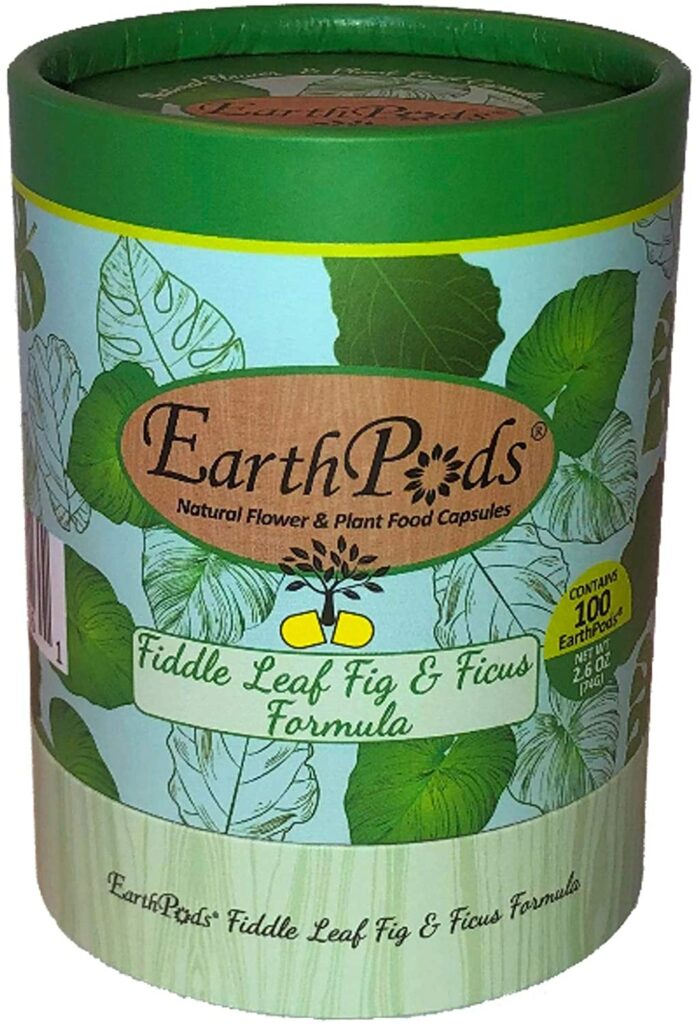
If you’re looking for a less messy approach in fertilizing your fig trees, you can always count on slow-release spikes. Earth Pods Ficus & Fiddle Fig Tree Fertilizer Spikes has a formula that helps emulate a forest-earth-like soil for your plants.
It’s an organic fertilizer that contains a diverse set of nutrients, organic growth hormones, beneficial soil microbes and trace materials.
To have the same soil pattern from the soil found in the forests, it is derived from:
- Essential bacteria and fungi
- Humic
- Pelvic
- Amino acids
Earth Pod’s formula helps promote the strong roots and robust stem and leaves for your fig trees. It also helps your plants recover from transplant shock and increase their disease and drought resistance.
This slow-release fertilizer is applied every 2 to 3 weeks. It is also applicable for:
- Golden pothos
- Colothea
- Draconian
- Schefflera
- Monstera
Aside from being a kid and pet-friendly fertilizer, a pack of Earthpods can serve as a 5-year supply for a single fiddle fig plant. Talk about savings!
As long as you properly placed the spikes to the drip line of your trees, you’ll never have any problems with this fertilizer.
Pros
- Organic fertilizer
- Slow-release formula prevents overfeeding fiddle fig trees
- Environment-friendly
- Pet and kid-friendly
- No mess and no smell
- Good for both indoor and outdoor plants
Cons
- A bit pricey
3. Jobe’s Organic All-Purpose Fruit Tree Fertilizer
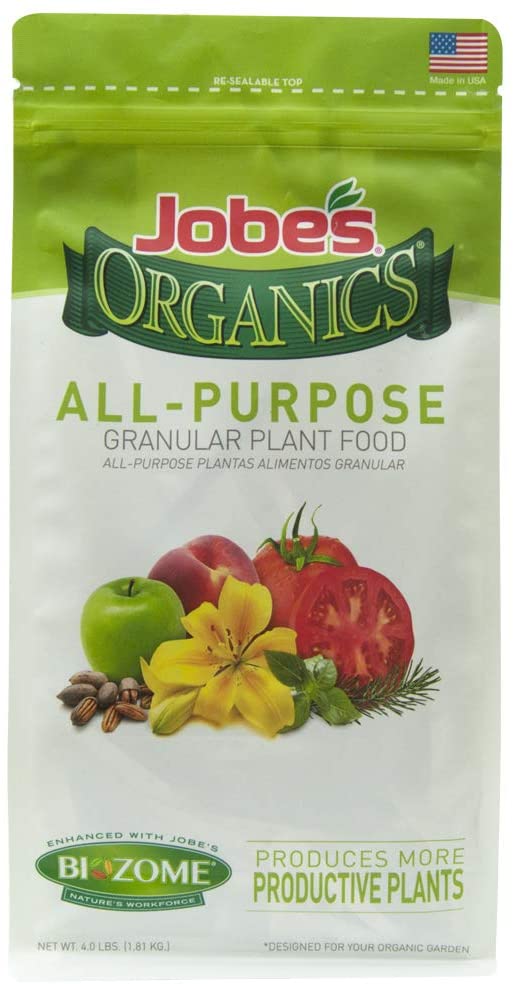
Aside from Dr. Earth, Jobe’s Organic All-Purpose Fruit Tree Fertilizer is also another leading organic plant food that you can try. Jobe’s line of fertilizer has been known for its effectiveness in nourishing plants without harming the environment.
Jobe’s All-Purpose Fertilizer is a 4-4-4 NPK granular plant food that slowly releases nutrients to your fig trees for 4 to 6 weeks. It is derived from organic materials which are as follows:
- Feather meal
- Nitrogen
- Phosphorus
- Potassium
- Processed manure
It also contains Biozome with beneficial microorganisms that help break down nutrients to make nutrients readily available to your plants as soon as they need them.
Jobe’s All-Purpose fertilizer is also equipped with organic materials that help improve the soil condition to keep your plants drought-tolerant and disease and pet-resistant.
Since this fertilizer is organic, it’s safe to use around kids and pets. However, it has a bad smell due to its natural contents which makes it not that suitable for indoor plants for some gardeners.
Pros
- Organic fertilizer
- Environment-friendly
- Kid-friendly
- Pet-friendly
- OMRI-listed
- Slow-release formula prevents overfeeding your plants
- Equal distribution of NPK
Cons
- Bad smell
4. Fiddle-Leaf Fig Plant Food

Fiddle-leaf Fig Plant Food is another option for gardeners who grow fiddle-leaf figs or fickle lyrata that is specially formulated to promote their dark green leaves and healthy plant system. Fiddle-leaf fig is a staple houseplant and often found in interior decoration shops for its green and shiny impact on indoor design.
To keep them shiny and green, Fiddle-leaf Fig Plant Food is formulated with calcium, phytonutrients from sea kelp and microorganisms for a healthy soil biome. It is a 3-1-2 NPK liquid fertilizer that you can simultaneously use with other plant supplements.
It’s best used when watering your plants. It also doesn’t contain urea and has less risk for burning your fiddle-leaf figs.
This fertilizer can last for up to 6 months and you’ll only need a teaspoon for every two cups of water. It also comes with a free fiddle-leaf fig webinar and e-book that’s perfect for beginners.
Pros
- Specially formulated for fiddle-leaf fig
- No risk of burning plants
- Urea-free
- Comes with a free webinar and e-book
- Contains extra nutrients like calcium for better nourishment
Cons
- Formula leaks may stain house items
- You should test it first to see the reaction of your plant towards it.
5. Miracle-Gro All-Purpose Plant Food
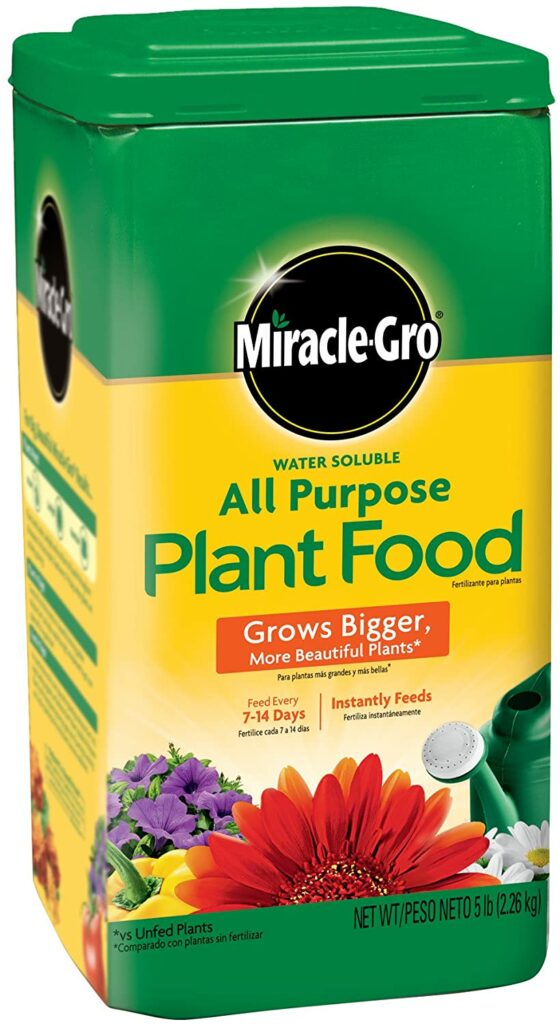
Miracle-Gro is among the popular brands of fertilizers. For fig trees, Miracle-Gro All-Purpose Plant Food is the most suitable for fig trees. It is a 24-8-16 NPK fertilizer that comes in the form of water-soluble granules.
This fertilizer is mixed with water that helps nourish your plants instantly. It’s not only good for fig trees, but also for flowers, shrubs, and other outdoor plants.
Application of this fertilizer is every 7 to 14 days until you see the results. Since fig trees have the tendency to be overfertilized, you can divide the recommended application into smaller batches.
Pros
- Safe to use around kids and pets
- Feeds instantly
- No smell
Cons
- Non-organic fertilizer
- Messy
6. Jobe’s Fruit and Citrus Fertilizer Spikes
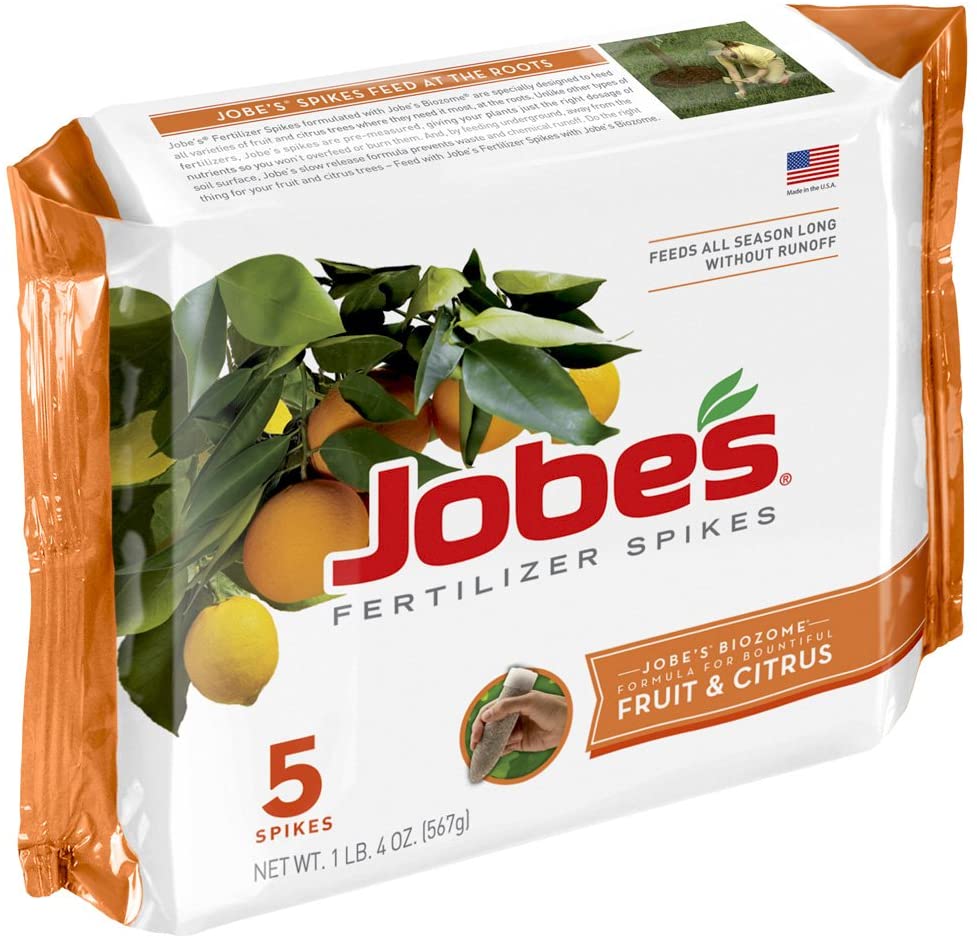
Looking for another spike fertilizer?
Jobe’s got you covered. Their Jobe’s Fruit and Citrus Fertilizer Spikes product is another option that you can compare with Earthpopds. It’s also organic and is already pre-measured to nourish your fig trees for 2 to 3 months.
It’s an 8-11-11 NPK fertilizer that contains healthy bacteria, archaea and Mycorrhizal fungi to help improve the soil condition. The spikes are derived from:
- Biozome
- Bone meal
- Feather meal
- Potash
- Manure
This fertilizer has a slow-release formula that makes it best for potted fig trees. Since it’s organic, it’s environment-friendly and safe to use around kids and pets. At the same time, it’s OMRI-listed so you can be sure it generally uses organic materials.
Pros
- Organic fertilizer
- Kid and pet-friendly
- OMRI-listed
- Slow-release formula is ideal to prevent overfertilizing trees.
Cons
- Bad smell due to organic content
7. Urban Farm Citrus Fertilizer
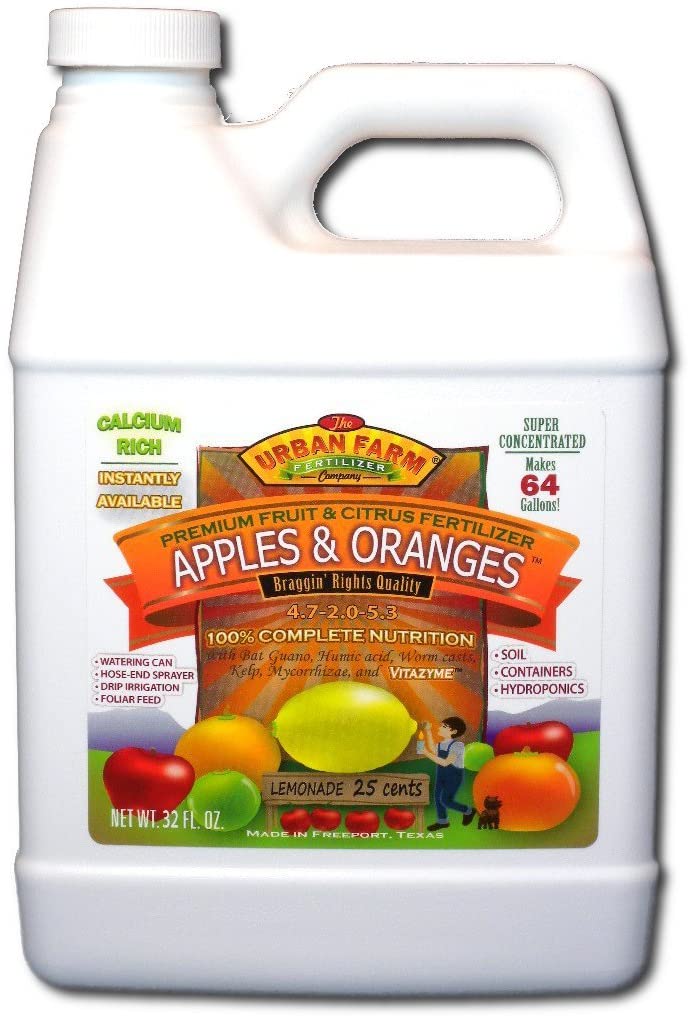
If you’ve tried most of the fertilizers we listed above and are still looking for something new, here’s a handcrafted fertilizer for you.
Urban Farm Citrus Fertilizer is a concentrated liquid fertilizer micro-brewed to feed all citrus and fruit trees.
This fertilizer contains 4.5-2.0-4.2 NPK and made up of the following:
- Mycorrhizal
- Worm casts
- Humic acid
- Kelp
- Enzymes
- Minerals
- Calcium
What makes the difference is its hybrid nutrients from organic materials and hydroponic-grade minerals such as:
- Bat guanos
- Vitazyme
- Amino acids
- Hydroponic-grade mineral salts
It’s highly concentrated wherein a gallon can make 256 gallons of diluted fertilizer. In spite of its good qualities, it might be restricted in some states due to potential phosphorus runoff.
Check your local restrictions for chemical use before buying this product.
Pros
- Contains a hybrid mixture of organic nutrients and hydroponic minerals
- Nutrients are not based on volume but on the capacity to feed your plants
- Hand-crafted weekly
Cons
- Potential phosphorus runoff if not used as advised.
- Restricted in some states with chemical use restrictions
8. Espoma TR4 Tree Tone Fertilizer
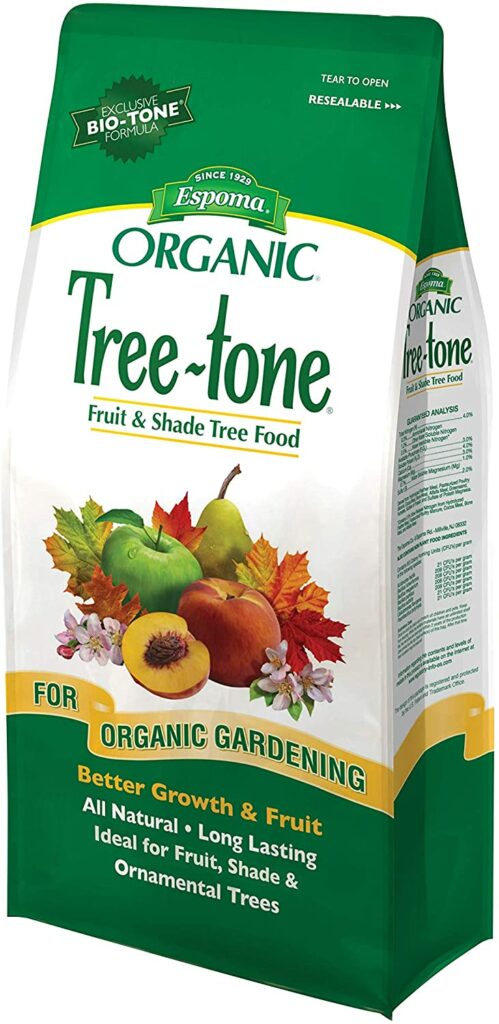
Espoma Tree Tone Fertilizer is a good choice if you’re looking for a fertilizer best for mature fig trees. It’s a 6-3-2 NPK organic fertilizer which is a good alternative for Dr. Earth or Jobe’s Organics.
Espoma Tree Tone has a slow-release formula that contains Bio-tone microbes to improve the soil condition. It also contains 5% calcium and 0.5% magnesium that equips your fig trees with more nourishment for better plant growth.
This fertilizer is all-natural and claims to have no fillers and sludge. Espoma also prides itself on having zero raw material waste and keeps manure out of the rivers by serving as the largest recycler of manure.
Espoma Tree Tone is low in salts so there’s no risk for burning your plants. Since it’s derived from organic materials, it’s safe to use around kids and pets.
Pros
- CDFA-listed
- Organic fertilizer
- Contains Ezra nutrients that boost the nourishment of your fig tree
- Kid and pet-friendly
Cons
- Smells bad due to organic contents
9. JR Peters Classic Citrus Feed
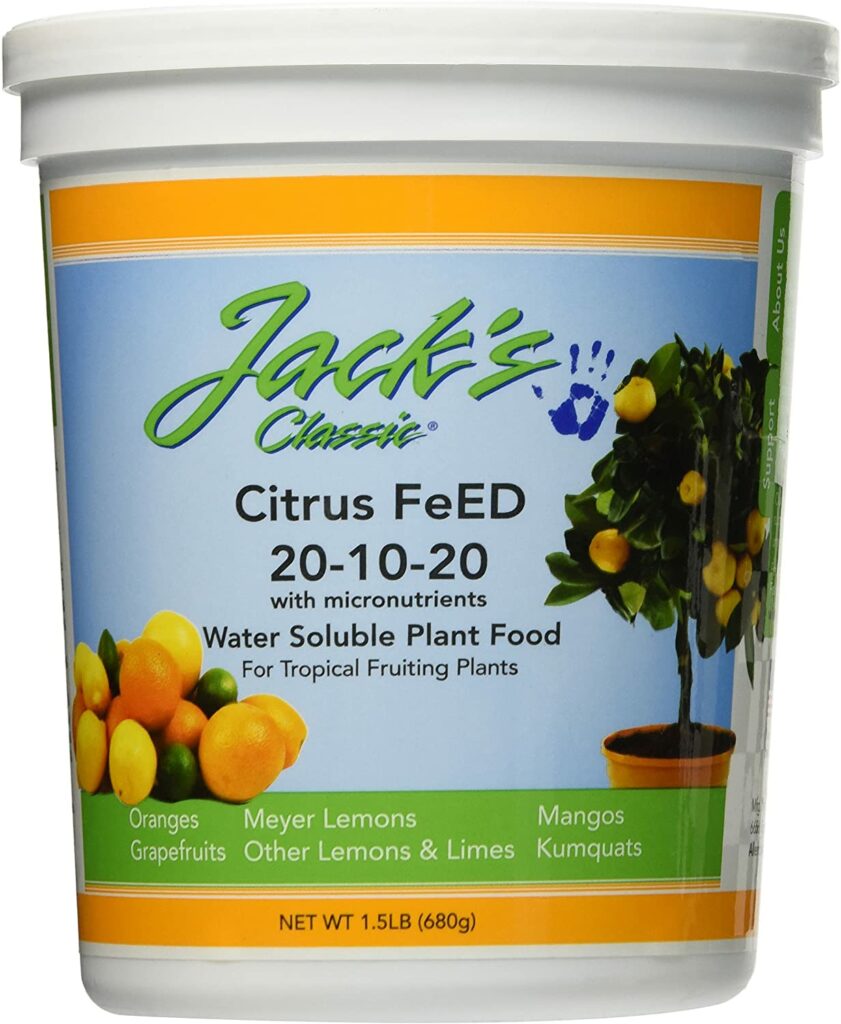
JR Peters may be the last on our list but that doesn’t it’s not a good fertilizer. JR Peters Classic Citrus Fertilizer is a 20-10-20 NPK fertilizer specially formulated to provide the specific needs of citrus fruit trees like fig trees.
This fertilizer is in a water-soluble formula that is known to help provide immediate results in plants since it goes into the plant’s system whenever you water your fig trees.
It also contains enhanced micronutrient levels to help your fig trees produce strong branches, darker green leaves and improved fruit development.
You can use JR Peters Classic Citrus Feed through foliar spray or apply to the roots. Most gardeners also love its water-resistant plastic tub compared to the box packaging that gets easily deformed or wet over time.
Pros
- No smell
- Specific formulation to nourish citrus trees
- Water-resistant packaging
- Two-way application: foliar and soil drench
Cons
- Non-organic fertilizer
What You Need To Know About Fig Trees
Fertilizing your fig trees is only one of the essential care that you can provide for them. It takes careful observation and knowledge about fig trees to learn how to cultivate and propagate them.
So here are some facts about fig trees that every gardener should know:
Plant Features
- Unlike other plants, fig tree flowers don’t require pollination to produce fruits. They’re self-reliant.
- Other varieties of fig trees can grow in cold temperatures and don’t produce edible fruits.
- Fig fruits are sweet and can be eaten raw or be served as an ingredient in some cuisines.
- Container fig trees grow well in soil-based potting mix with good drainage. You may add refined wood dust to the soil to keep it loose and maintain drainage.
- While indoor figs require good drainage and soil-based mix. Outdoor figs are more versatile and can grow in different types of soil but loam soil is their favorite among the rest. An ideal soil condition is sandy-clay loam soil with a soil PH of 6.0 to 8.0 with high lime content.
- A fig tree can grow for up to 10 meters.
- Fig fruits can last 2 to 3 days in cold storage.
- Figs are considered as one of the oldest cultivated fruits in the world and a tree can last for almost 200 years.
- There are 5 varieties of fig trees:
Brown turkey is a popular variety in the US that loves and thrives in warm weather. It is particularly sensitive in cold temperatures below 10 degrees Celsius and self-pollinates.
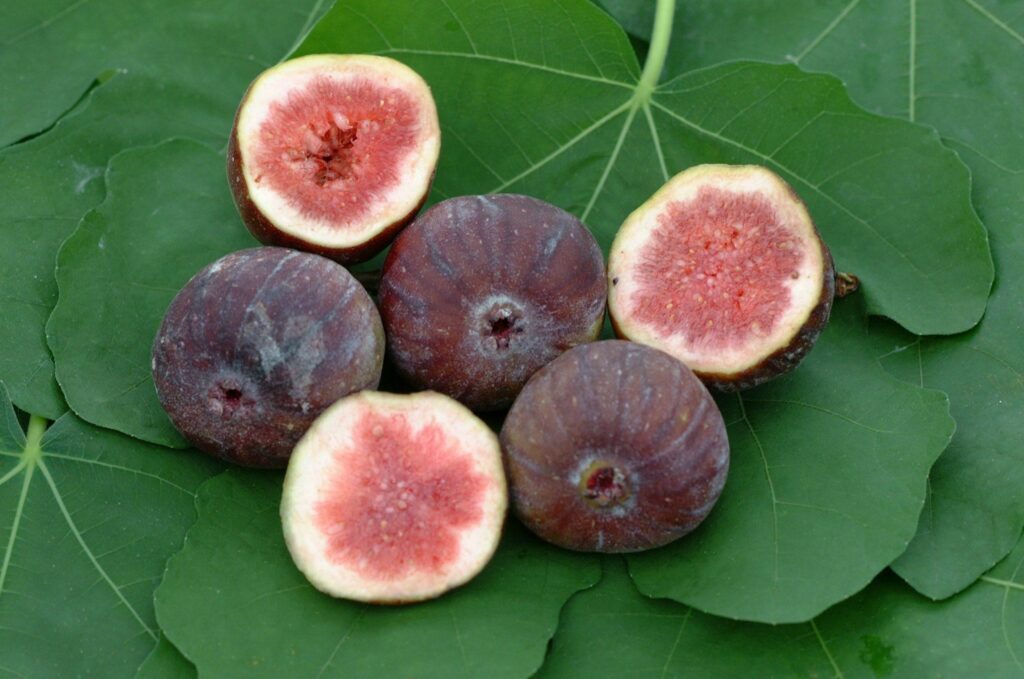
Celeste fig tree is an easy-to-grow variety that produces purple figs. They’re disease and pest resistant and have roots that are less invasive than brown turkey. It is a small tree that makes it easy for you to harvest the fruits.
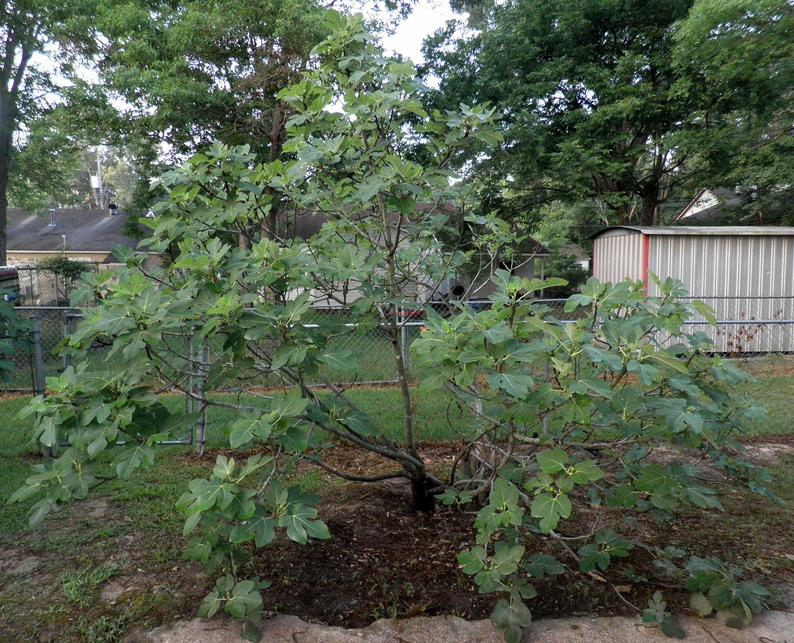
Hardy Chicago fig tree is the winter-hardy variety to -12 C and its roots are hardy to -29 C. It may show dieback in winter but keep it warm with tree wraps so it can regrow again in spring.
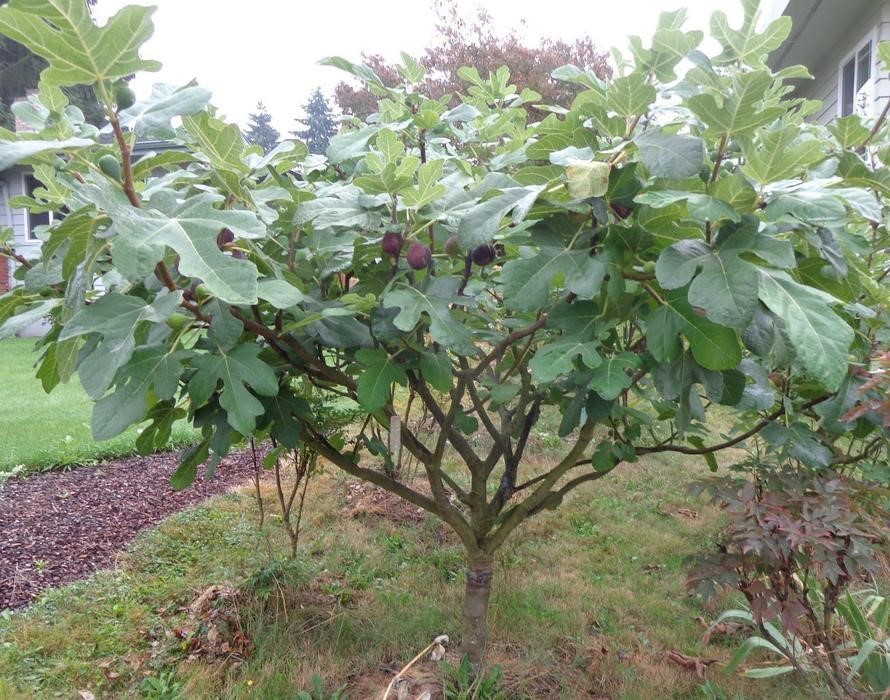
Desert king fig tree is a versatile plant that can live in both warm and cold temperatures. It’s the most productive type of fig as it can produce 6 to 8 fruits in one branch.
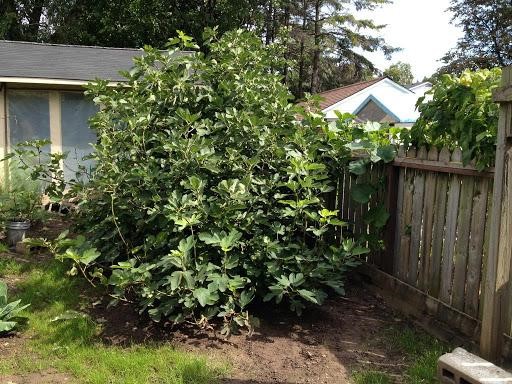
Kadota fig tree produces sweet figs and is widely known to be the kind used for canned figs. It possesses a dark-green foliage as it also has ornamental qualities. Most gardeners consider this variety as a beginner-friendly tree.
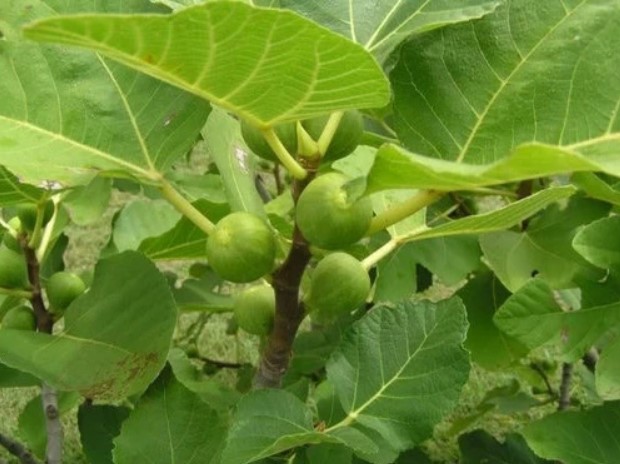
- Fig fruits are a great source of dietary fiber, potassium, iron, vitamin A and calcium. They can also be brewed as alcohol and used as a laxative
- The fruiting cycle of fig trees is about 120 to 150 days and a tree produces fruits every year or every two years. Fig fruits ripe every August to October.
Plant Care
- If you are wondering how much water do fig trees need, an inch of water every week would be enough for them.
- Fig trees thrive in hot weather. So, allow them to bask in the sun for 8 hours a day for optimal growth, especially during summer.
- Consider growing fig trees in containers and indoors when the temperature reaches -12 degrees Celsius.
- If you’re planning to plant outdoor fig trees, make sure that you live in Zone 8 or warmer zones. However, if you choose the cold-hardy variety of fig tree, then you’ll never have a problem with the cold temperatures. Just remember to plant outdoor figs when they are dormant like early spring and late fall.
- Plant fig trees 20 feet apart as they grow roots deep in the soil and are invasive.
- Regular watering is required in young figs once a week.
- Keep weeds out and maintain the moisture of the soil by adding mulch or any soil covering.
- Thin the fig fruits to encourage the growth of bigger fruits.
- To know how you can protect your fig trees against pests and diseases, here are the 5 common infestation in fig trees:
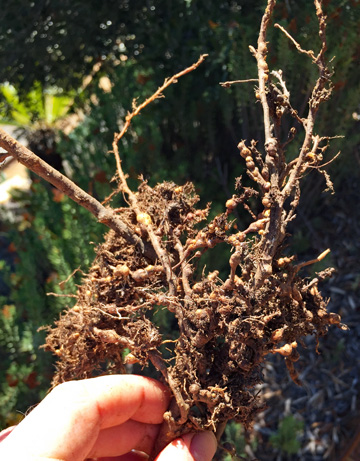
Root-knot nematodes: Plant parasites that are prone to plants that live and thrive in warm weather like fig trees. It can kill young fig trees and affects the fruit development in mature fig trees.
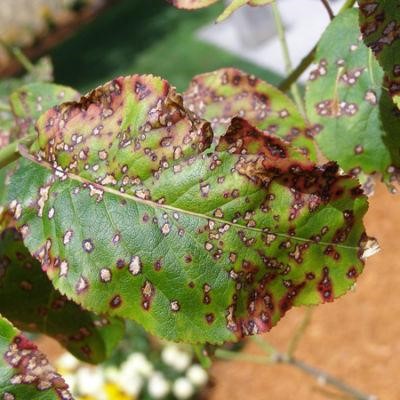
Leaf spot is a plant disease that prevents infected leaves’ ability to have photosynthesis. It is usually harmless but can make your fig trees susceptible to pests and other plant diseases.
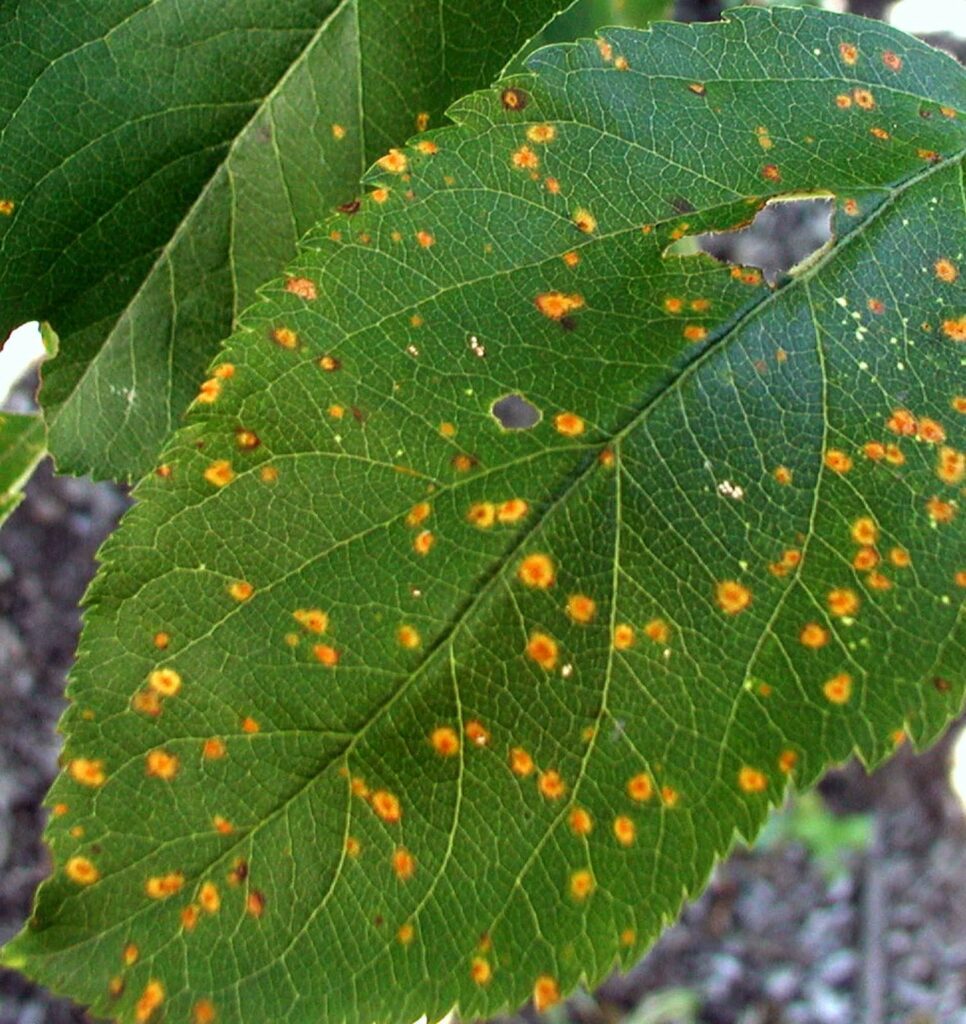
Rust is a plant fungal disease that causes the leaves to yellow, turn into black, and fall off the stem. This can affect the overall health of your plant so make sure to address it as soon as possible.

Thrips are one of the unwanted insects in most plants as it sucks all the sap and serves as a vector for a lot of plant diseases.
Spider mites are small arachnids that are commonly found under the leaves of plants. They feed off plants by piercing the leaves and feasting on their sap.
- As tempting as it can be, don’t pick unripe figs and wait for the fruit to ripe before harvesting them. They will not continue to ripen after you detach them from the stem.
- The sap of fig trees can irritate your skin. So, make sure to use gloves and a long-sleeved shirt when it’s harvest time.
- Young fig trees are not strong enough for cold winters compared to mature fig trees. Make sure to keep the young fig trees indoors to overwinter them in pots until they have a stronger root system to survive the extreme weather conditions.
- Prevent young figs (2 to 5 years old) from dying by choosing a good location where they won’t compete for nutrients in the soil and they get plenty of suns. You must also do the right preparation such as applying mulch and soil conditioning.
- Fig tree roots are invasive so it’s best to plan before planting them. Otherwise, you can build root-retaining walls to keep the roots in place. Strategize a good location if you’re planting Brown turkey fig trees as they are more invasive than Celeste.
- Young fig trees need watering to address the initial signs of stress during summer. Otherwise, they will defoliate for survival. Overwatering fig trees during the fruiting cycle can cause fruits to split.
You might like: What Are The Best Fertilizers For Geraniums? – Reviews & Top Picks (2023)
Tips in Fertilizing Fig Trees
As you nourish your fig trees with fertilizers, here are some tips to avoid misuse and end up with dead plants:
- Make sure to fertilize trees that are placed in sandy locations and surrounded by other plants that compete with the soil nutrients in their location.
- Adding compost, liquid seaweed or manure tea can be enough as a fertilizer for fig trees. You may also apply seaweed extract every month during the growing season. This tree, like other plants, can grow well in soil with plenty of organic material.
- Fig trees planted in containers need more fertilizers than those planted in the ground.
- Overfertilization results in:
- Less and unripe fruits
- Increased susceptibility to cold weather damage
- Growth spurt
- Splits and cracks in trunks and branches
- Unripe fruits will fall and might take 3 to 4 years of recovery
- Fertilize fig trees only when they show slow growth and pale leaves. If figs are still less than 12 inches in height after the growing season, it needs a boost from a fertilizer that should be applied in late winter or at the end of mid-summer
- If the fertilizer is too strong you may divide it into smaller batches so you won’t overfeed your plants.
- Ideally, one to two-year-old fig trees require an ounce of fertilizer for a month when the leaves start to grow.
- Mature fig trees don’t need much fertilizer and can survive using a third of an ounce of fertilizer per foot of tree height during late winter, mid-spring, and summer.
- Don’t fertilize if the fruits don’t mature because it’s due to drought and not lack of nutrients. Adding fertilizer for this problem can do more harm than good to your fig trees.
Final Thoughts
Consider fertilizing fig trees in an as-needed approach. They’re one of the easiest plants to grow as they don’t demand too much water and intricate care. However, they need a lot of sunlight to be in their best health. So, make sure to place them in a sunny area during spring and summer.
We hope the 9 best fig tree fertilizers mentioned in this post can help you find the one that will work for you.
If one of them worked for you, share your experience with us in the comments below.
If you also find this guide helpful, spread the word and share it with your friends. May you have a bountiful harvest and lush green fig trees this year.
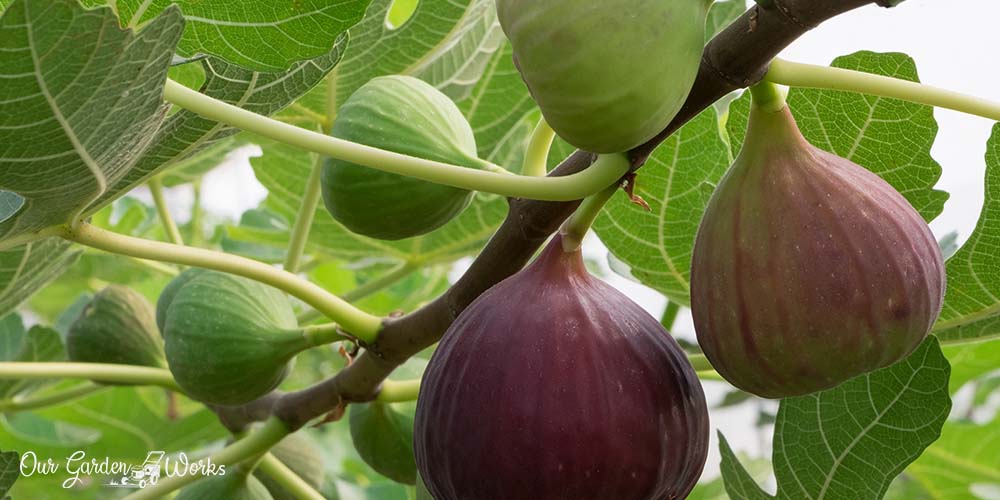
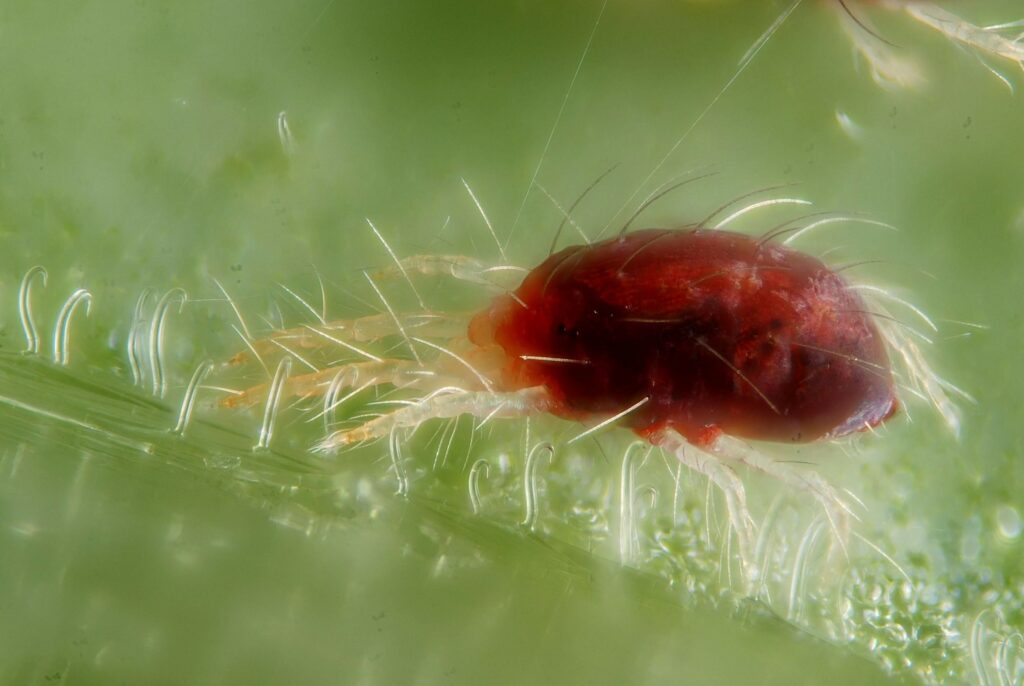
How do you determine an inch of water? Thanks
Hi Frank,
An inch of water is measured based on the depth of water above the soil when watering. To easily check if you reached the right levels, you can use a measuring line using a small stick. Place the stick on the soil and measure a one-inch distance above the soil surface and mark it with a pen or tie it with a ribbon. So, when you water your plants it would be easier for you to see your watering limit. You may want to make sure that the soil is fully drenched before it reaches the limit.
Hope that helps!
P.S: There’re 2 tools to convert 1 inch of water:
1. Cubic Inches to gallon converter – https://www.asknumbers.com/cubic-inches-to-gallons.aspx
2. Gallon to Liter converter – http://www.gallonstoliters.com/ (Optional)